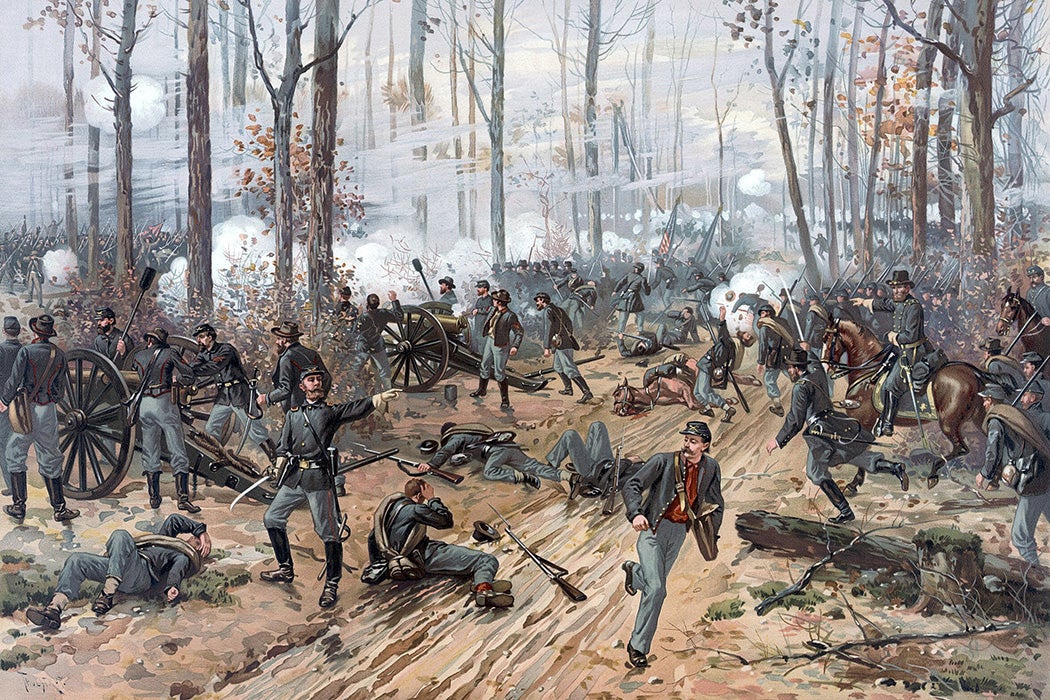What can motivate a person to run toward danger? What can push them to kill a stranger? These are questions that concern anyone commanding a military. As historian Gervase Phillips writes, the way strategists thought about these issues changed in the nineteenth century as a result of technological advances in weaponry.
Early in the century, Phillips writes, battles required infantry fighters to line up side by side, equipped with muskets that were only accurate up to about 150 meters. A soldier fired in the general direction of the enemy line, often through smoke-filled air, and couldn’t tell whether an enemy had been felled by his shot or someone else’s. With the rest of the unit around them, troops would usually be too ashamed to break ranks and flee. And if anyone did, a nearby officer could force him back into place at swordpoint.
As weapons became faster and more accurate over the course of the century, tacticians shifted to “skirmishing” formations. Soldiers were more widely dispersed, could aim at a specific enemy combatant, and could take cover in their surroundings. This gave men more opportunity to act contrary to orders. Some attacked with zeal. Some ran from danger. And some avoided killing. One examination of rifles after a battle in the Austro-Prussian War found that multiple soldiers had repeatedly reloaded their rifles without firing, possibly suggesting that they wanted to look like they were fighting without actually ending another man’s life.
Phillips argues that this explains why military strategists of the time put heavy emphasis on “moral factors” in preparing troops for battle. In 1866, a Prussian captain wrote that an army of soldiers doing exactly as commanded would be “perfectly invincible,” but that was impossible as long as they retained the normal human desire to preserve their own lives.
The psychological element of battle helps explain why, well into the twentieth century, battalions charged at each other with bayonets and sabres, weapons that rarely killed but provided a psychological boost to their bearers. For example, soldiers in the American Civil War often found it irresistible to pause their advances and fire at the enemy from a distance, ineffectively. In this situation, a bayonet charge could create forward momentum and terrify the enemy into surrender.
Weekly Newsletter
More broadly, military leaders sought ways to create soldiers who would keep up the fight in a skirmishing formation despite high casualties. They might threaten deserters with death, but they often appealed instead to honor and moral bearing instilled by a disciplined, patriotic society. European observers especially admired the Japanese soldiers in the Manchurian conflict of 1904–05 for continuing to fight courageously in the face of likely death.
As the twentieth century continued, this desire to temper men into “the best steel,” as one German officer put it, contributed to the spread of military values into civilian life. Phillips notes that this was most obvious in totalitarian regimes but also took place in liberal societies, with an increasing emphasis on quasi-military training for children.







